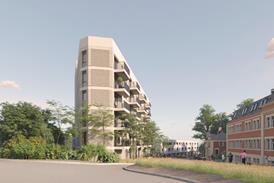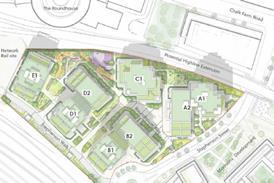New art centres are too focused on restaurants, shops and the visitor experience rather than the exhibitions, says Gillian Darley

The all too evident symptom of elephantiasis is massive swelling. Huge buildings, both newly built and rehabilitated, currently dot the capitals of Europe and yet, look closer, many of them are almost entirely empty.
Imagine the Tate Switch House, completely empty but for a floor of offices, and intermittent temporary exhibitions, and you have it
Recently in Athens, I looked round the National Museum of Contemporary Art – a confident reworking of the former Fix brewery, a Greek modernist building on Syngrou Avenue dating from 1961 (and itself on the site of a 1930s predecessor). Athens needs a home for its own modern art collection but although the immense building awaits, the commitment to establish the permanent gallery within has yet to be confirmed. In the meantime, the curators ‘conversed’ with the Museum of Contemporary Art in Antwerp (the resulting exhibition is now back in Belgium) and from April they embark on another partnership, this time with Kassel, for documenta 14. But the reconstruction will seem an extravagance until it takes on the function (and necessary staffing) for which it has been designed. Imagine the Tate Switch House, completely empty but for a floor of offices, and intermittent temporary exhibitions, and you have it.
Yet even there, it is long way from the viewing gallery at the top of Herzog and de Meuron’s handsome new building to the public galleries several floors below. Similarly, John Pawson’s Design Museum skies the permanent collection, but then offers up all the tempting corner spaces, those with views out over Holland Park, to functions that will raise the vital funds to keep the show on the road. In hard times, the need to aggressively harvest revenue and please the visitor is a difficult balance to maintain within the available space. Ever more pinched sources of government support, ever more desperate Trustees and direction, drive the buildings to work for their living. The fact that they are galleries or museums becomes almost incidental.
Easing financial burdens off the shoulders of cash-strapped local authorities becomes the name of the game
Even the National Theatre foyers must ‘work’ much harder than they once did, while the Barbican shop is now twice the size. No doubt all these adaptations and moves have been long and carefully considered against business plans. The plight of the Walsall Art Gallery is evident illustration that it is not enough to have excellent exhibitions, a permanent collection and an admired building if you cannot identify, and then corral, your current and potential funders into a succession of lucrative events. The shrinkage of the key function of the new Birmingham City Library is just another straw in the same hurricane-strength wind. Easing financial burdens off the shoulders of cash-strapped local authorities becomes the name of the game.
Happy is the city that can turn to a wealthy foundation for its cuIture. Athens has the new Stavros Niarchos Foundation funded cultural centre (the Opera House and Public Library by RPBW) while Lisbon’s Museum of Art, Architecture and Technology by AL_A is funded by EDP foundation, the Portuguese energy provider. Yet the undulating structure, clad in interlocking ceramic tiles reminiscent of those on the Sydney Opera House, primarily aims to stitch the River Tagus and the city together, thus being more viewing platform than gallery, its exhibition function served by subterranean, amorphous, multi-function performance spaces.
Defined, or personal, collections or modest selective exhibitions seem, I think, best placed to lift the (my) current dyspeptic mood. Thus, the refreshed Estorick Collection in London or Cambridge’s Kettle’s Yard (being gently renovated by Jamie Fobert) or the new galleries carved out below the Byzantine Museum in Athens are to be treasured – and supported. Small is beautiful has become, on reflection, a real challenge within the architectural brief.
















1 Readers' comment